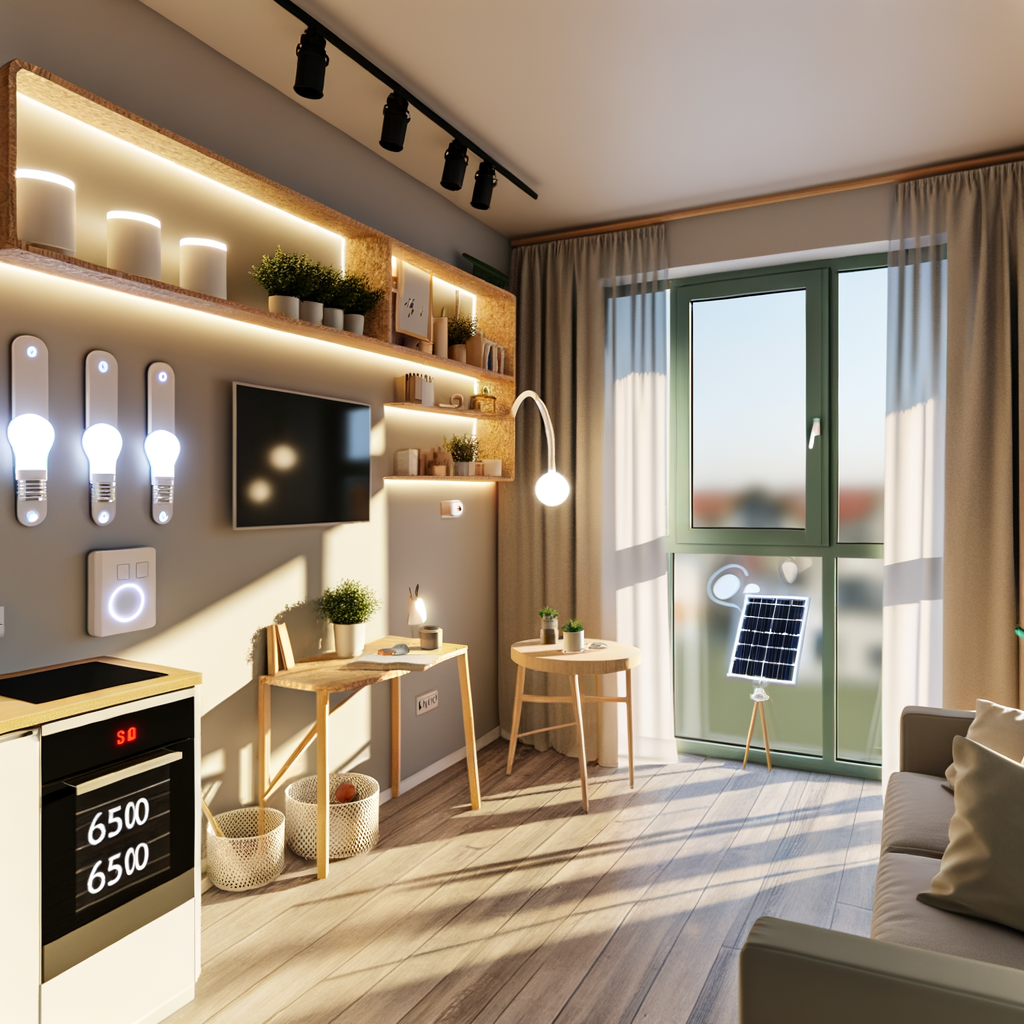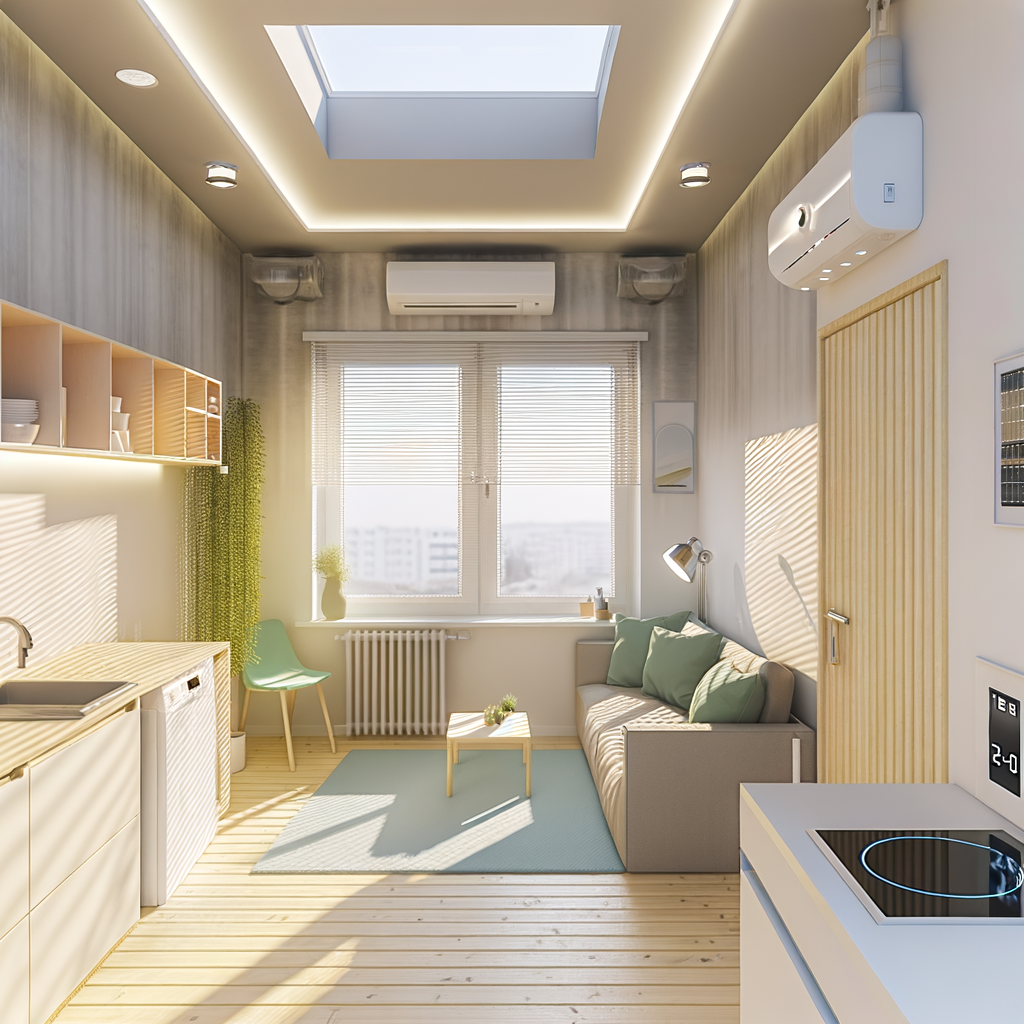How to Create a Smart, Energy-Efficient Apartment on a Renter’s Budget: A Step-by-Step Guide
Are you ready to slash your utility bills, shrink your carbon footprint, and upgrade your daily life—all without breaking your lease or your bank account? Even as a renter, you have plenty of opportunities to transform your space into a smart, energy-efficient haven. This step-by-step guide will show you how to use smart devices and energy-saving hacks to maximize comfort, convenience, and sustainability—while keeping things landlord-friendly and budget-conscious.
Why Go Smart and Energy-Efficient?
Optimizing your apartment for energy efficiency doesn’t just save money (up to hundreds per year); it also helps fight climate change and reduces everyday hassles. With today’s affordable smart tech and a few eco-friendly habits, you can make a big difference in how your apartment functions—no renovation or rewiring necessary.
- Reduce monthly utility bills
- Lower your environmental impact
- Enjoy modern conveniences and comfort
- Increase apartment security and peace of mind
Step 1: Assess Your Current Energy Use
Start With an Energy Audit
Before making upgrades, identify where you’re using (and wasting) the most energy. Many local utility companies offer free or low-cost audits—even for renters. Or go DIY:
- Check for drafts around windows and doors
- Look at your light bulbs and major appliances
- Notice which electronics are always plugged in
- Track heating, cooling, and water usage patterns
Use your last 2-3 utility bills for baseline numbers to track your future savings.
Step 2: Start With the Essentials—Supercharge Your Lighting
Switch to LED Bulbs
Traditional incandescent bulbs are energy-guzzlers. Swap them out for LED bulbs—they last 10 to 25 times longer and use up to 80% less energy.
- LED packages fit standard sockets and are available in all tones/brightness
- Cost just a few dollars per bulb—sometimes free from your utility!
- Take them with you when you move
Upgrade to Smart Bulbs
Smart LED bulbs let you control lighting from your phone or voice assistant. Set schedules, dim lights, and automatically turn off when not needed.
- No rewiring required—just screw them in
- Create custom scenes for work, sleep, movie nights
- Integrate with platforms like Alexa, Google Home, or Apple HomeKit
Step 3: Optimize Heating and Cooling
Use Smart Plugs or Thermostat Accessories
Renters usually cannot replace the thermostat, but you can use smart plugs to manage space heaters and fans.
- Set schedules for portable heaters/AC units
- Remotely turn them off to prevent energy waste
- Some plugs track energy usage so you know what’s costing you most
Seal Windows and Doors
Simple insulation can go a long way:
- Apply removable weatherstripping or draft stoppers
- Use thermal curtains to hold in heat or block sun
- Close blinds and curtains when you leave to regulate temperature
Rely on Fans
Position fans strategically to keep air moving in summer. In winter, a small fan can circulate warm air.
Step 4: Smart Controls for Electronics
Install Smart Power Strips
Many home electronics draw “phantom” energy even when off. Smart power strips kill power to devices like TVs, game consoles, and chargers when not in use.
- Plug in your entertainment center or computer setup
- Set schedules or smart triggers for devices
- Some strips individually control each outlet
Use Smart Plugs for Small Appliances
Plug coffee makers, lamps, humidifiers, or fans into WiFi-enabled plugs for flexible control and automation:
- Turn off devices remotely from your phone
- Schedule appliances to work only when needed
- Track how much energy each device uses
Step 5: Smart Water Conservation Tips
Add Low-Flow Adapters
Without replacing any fixtures, install removable low-flow adapters for showers and faucets. They can be swapped before you move out.
- Reduces water use by up to 50%
- Maintains strong water pressure
- Easy, tool-free installation in minutes
Install a Smart Leak Detector
Wireless water leak detectors alert your phone if they sense a leak under sinks or behind toilets—catching issues before they become disasters.
Step 6: Smart Home Security that Saves Energy
Choose Smart Locks and Sensors
Smart door locks (especially keypad or WiFi models) and window/door sensors can give you peace of mind—without wiring or drilling.
- No need for landlord permission (most work with temporary mounts or use existing deadbolts)
- Remotely check if you’ve left doors unlocked
- Receive notifications for unexpected entries or movements
Add Motion-Activated LED Lights
- Provide safety and security outdoors, in hallways, or closets
- Only turn on when needed—save energy and battery power
- Battery-powered versions use peel-and-stick mounts
Step 7: Smart Home Hubs and Voice Assistants
Pick a Platform
The best results come when your smart devices work together through a platform, like:
- Amazon Alexa
- Google Assistant / Google Home
- Apple HomeKit
Most renters start with a smart speaker or display. These manage your lights, plugs, and security with simple voice commands or automations—no rewiring, drilling, or holes required.
Get Creative With Automations
Combine cheap sensors and smart assistants for energy-saving routines:
- Turn off all devices/lights when you leave home (using your phone location)
- Trigger fans based on air temperature (with $20 smart sensors)
- Automate coffee to brew only on weekday mornings
Step 8: Eco-Friendly Habits for Low (or No) Cost
No gadget can replace smart habits! Adopt these practices to amplify your savings:
- Unplug chargers and small appliances when not in use
- Wash clothes in cold water, only full loads
- Air dry laundry when possible
- Limit shower length with a timer or playlist
- Use a pressure cooker, air fryer, or microwave to cook faster and use less energy
- Keep a plant or two for natural air purification
- Recycle properly and compost if building allows
Step 9: Talk to Your Landlord or Building Manager
If you’re interested in bigger upgrades—like a smart thermostat, more efficient appliances, or window film—bring proposals to your landlord. Highlight the cost savings, appeal to eco-minded tenants, and offer to split costs. Many property managers are open to upgrades that benefit both parties, especially if they increase property value or attract new renters.
Putting It All Together: Sample Smart Apartment Kit for Renters
Here’s a basic list to set up your first smart, energy-efficient rental (everything is removable):
- 4-8 LED smart bulbs
- 2-4 smart plugs
- 1-2 motion sensors or smart power strips
- 1 smart speaker or voice assistant
- 1-2 water leak




